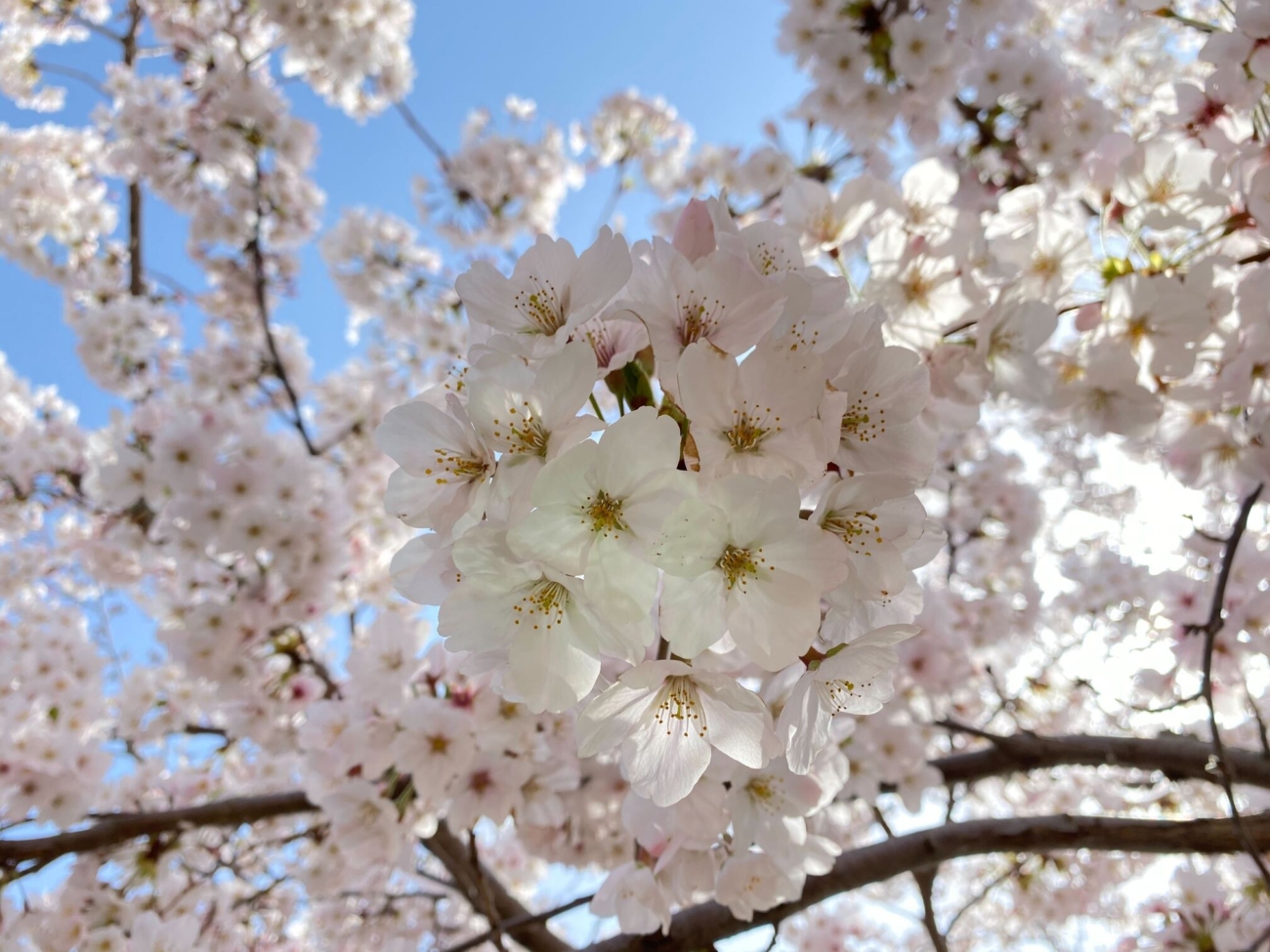Seasonal Food: Oki Rock Oysters (iwagaki oysters)
Cultivated locally here in the islands, Oki rock oysters are in season from March through June. They are creamy and rich in flavour. If you are a fan of oysters, don’t miss the chance to taste this local delicacy! During the oyster season, you can find them, served fresh, in a couple of the restaurants on the islands.
If you are going to visit Ama Town, you must try their “Haruka” oysters! Haruka is the rock oyster brand from Ama Town, and the Haruka rock oysters are famous for their gigantic size! Read more about Haruka hereThis will open in a new tab. on our Facebook page. Different brands of oysters are available on all islands, so make sure to not miss this springtime treat during your visit.
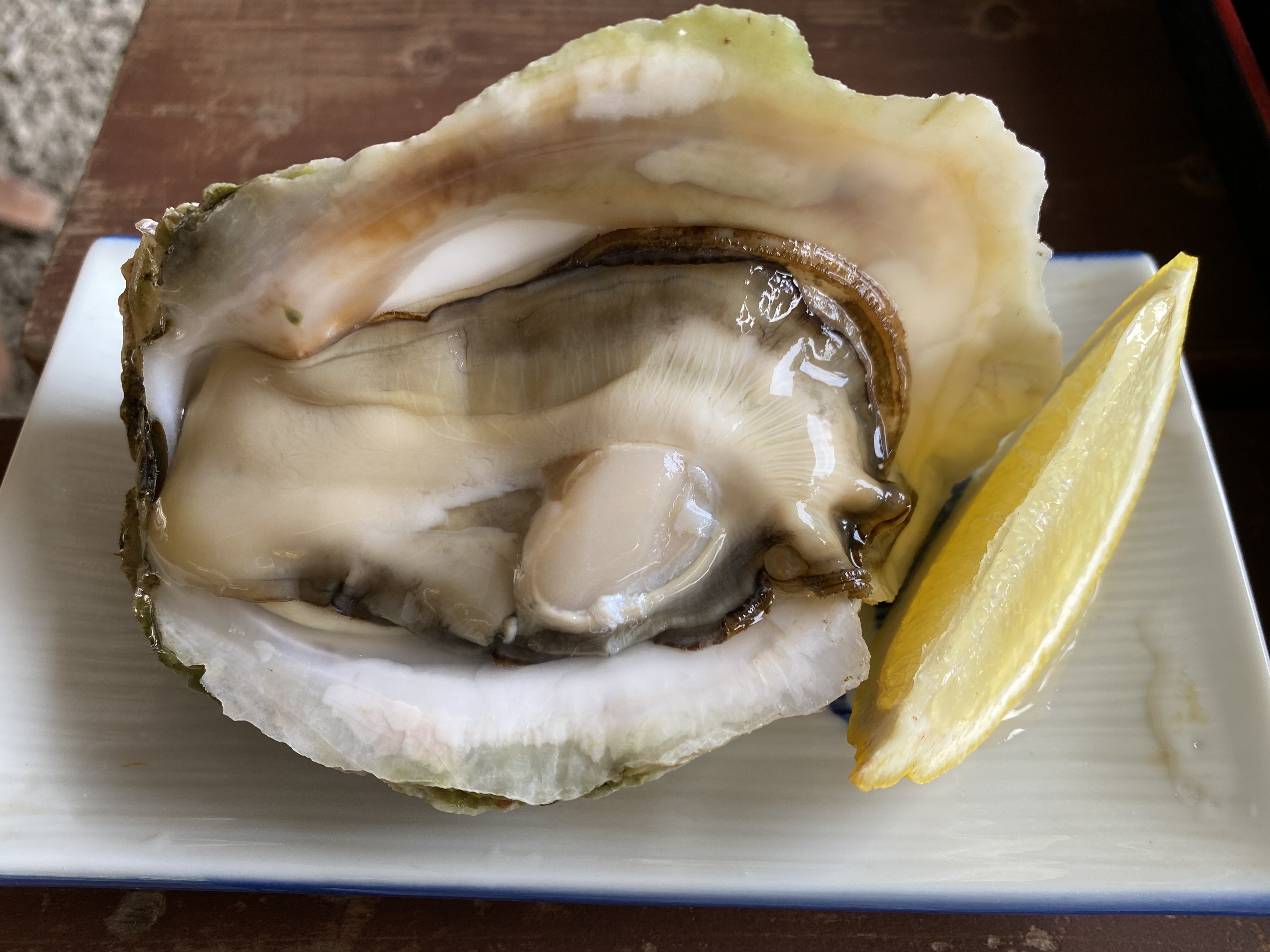
Seasonal Flowers
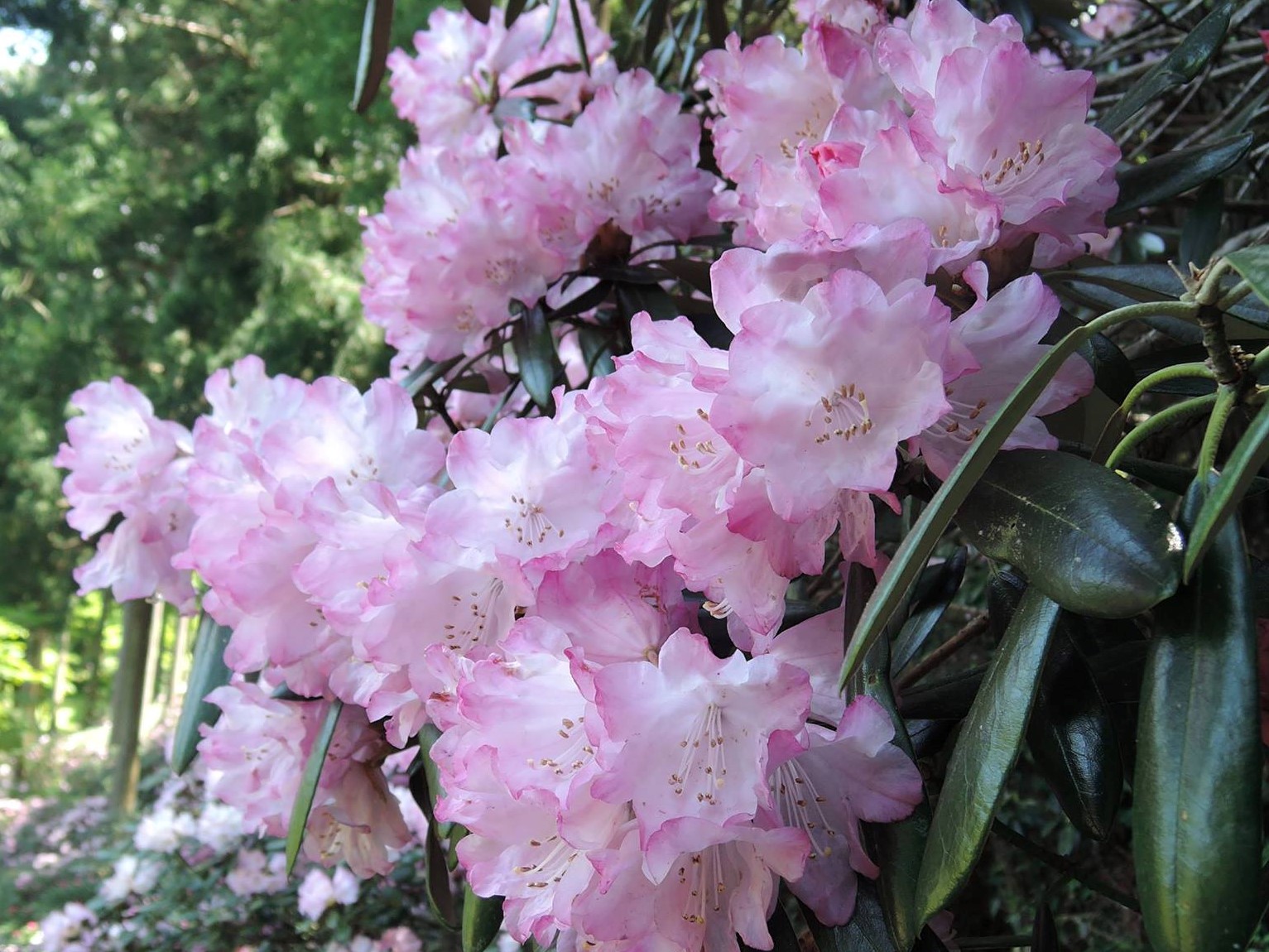
Along with cherry blossoms, a few of the endemic plants also blossom in spring.
Oki Rhododendron:
Oki Rhododendron is an endemic rhododendron found in Okinoshima Town. Visit the Oki Rhododendron Park and you can walk through a grove of pink from late April through early May. During the blooming season, events such as tea ceremony and music performances are held.
Oki Thistle:
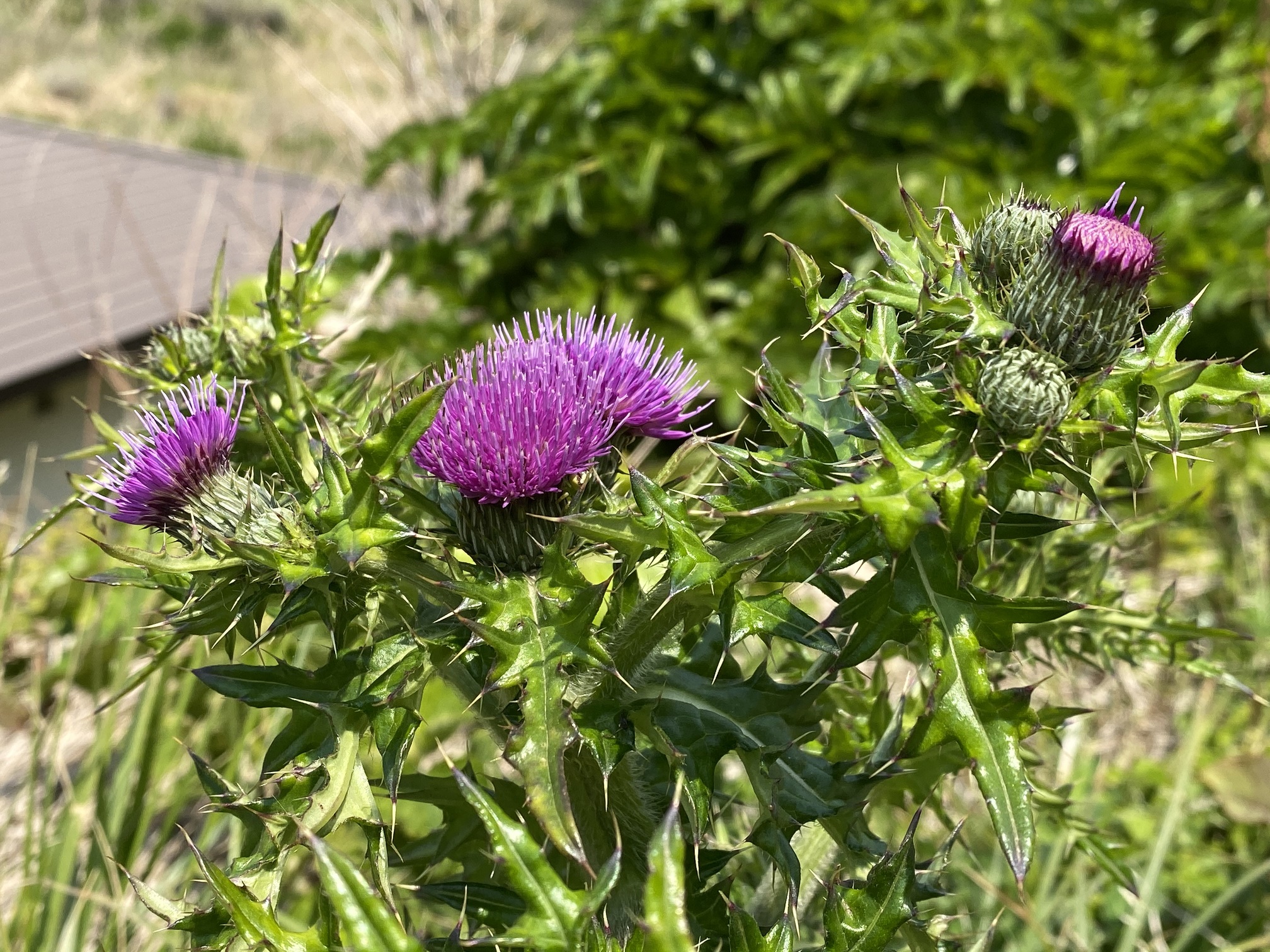
Oki Thistle is a native species that can be easily seen around the islands. You can find them blooming on Matengai Cliff from May to early summer. Compared with its counterpart on the mainland, the thorns of the flower are very sharp; which is why we highly recommend wearing long trousers when you go on a hiking trip!
Cherry Blossom:
The cherry blossom season in Oki is from late March to mid-April depending on the weather and the area. There are many “hanami” locations for you to admire the beauty of the blossoms in full bloom, and Oki Shrine in Ama Town is one of the popular locations. The souvenir shop plus bakery, Tsunakake, is located conveniently just across the street, where you can enjoy some freshly baked bread or delicious snacks. Check out this list of our recommended spots to immerse yourself in the blooming pink blossoms!
Festivals and Events
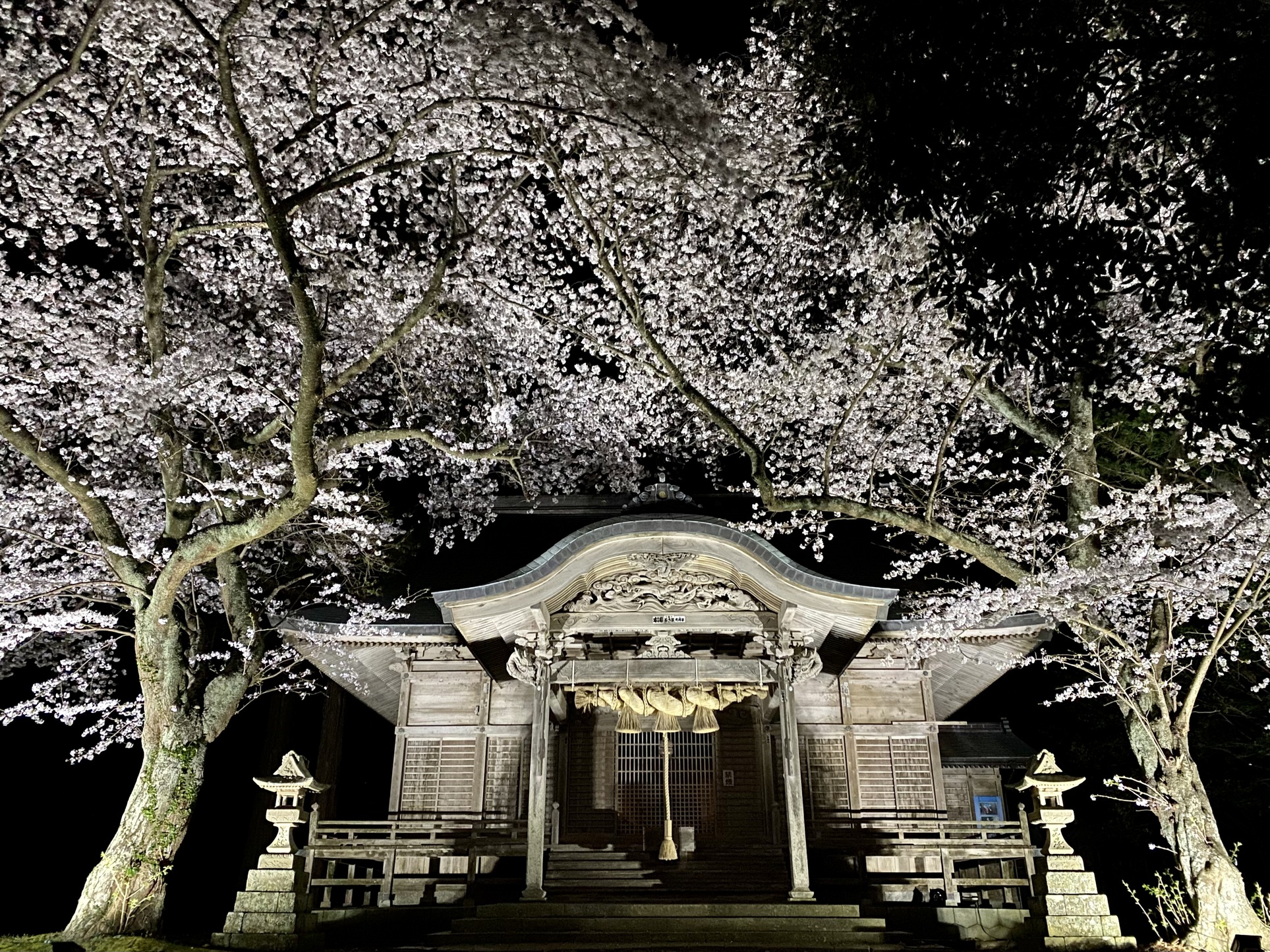
Spring will not be complete without these events and festivals! From sunset café, to traditional dance rituals and a festival named after a seasonal flower, the calendar is packed with many enjoyable and fun events!
Kuniga-biraki Festa, Nishinoshima Town (April):
Kuniga-biraki Festa is a series of events held in Nishinoshima Town in April. There is a half-day coastal cleanup event and sunset café at Kuniga Coast, evening cherry blossom viewing light-up, and more!
Rengee-mai Dance, Okinoshima Town (21 April):
Held every year on 21 April at Oki Kokubun-ji Temple, this is an unmissable treat for lovers of traditional Japanese dances! Designated as an Intangible Folk Cultural Property of Japan, Rengee-mai Dance is a collection of Buddhist dances (seven are performed nowadays) and each dance tells a story. Dancers are dressed in colourful costumes and the masks they wear are believed to have South East Asian roots. Come and watch the performance, and experience a temporary time-travel back to the ancient Japanese court in the Nara Period (710-794).
Held in late April in Chibu Village, this is one of the most popular events in the Dōzen area. The event is held according to the flowering season of the wild radish (no-daikon) blossoms. Other than mouthwatering food and the lovely purple-coloured flowers, you can also enjoy some stage performances by the locals and join the “mochimaki” (scattering of mochi rice cakes) at the end of the festival. Mochi rice cakes are considered a token of good luck and they are scattered / thrown from the stage towards the gathering crowd. The more mochi rice cake you get, the luckier you get!
During the season, the flowers bloom all over Mt. Akahage. We highly recommend that you rent a car to go and check out the picturesque scene of wild radish blossoms blooming, with cows grazing nearby.
Mizuwakasu Shrine Festival, Okinoshima Town (3 May, even-numbered year):
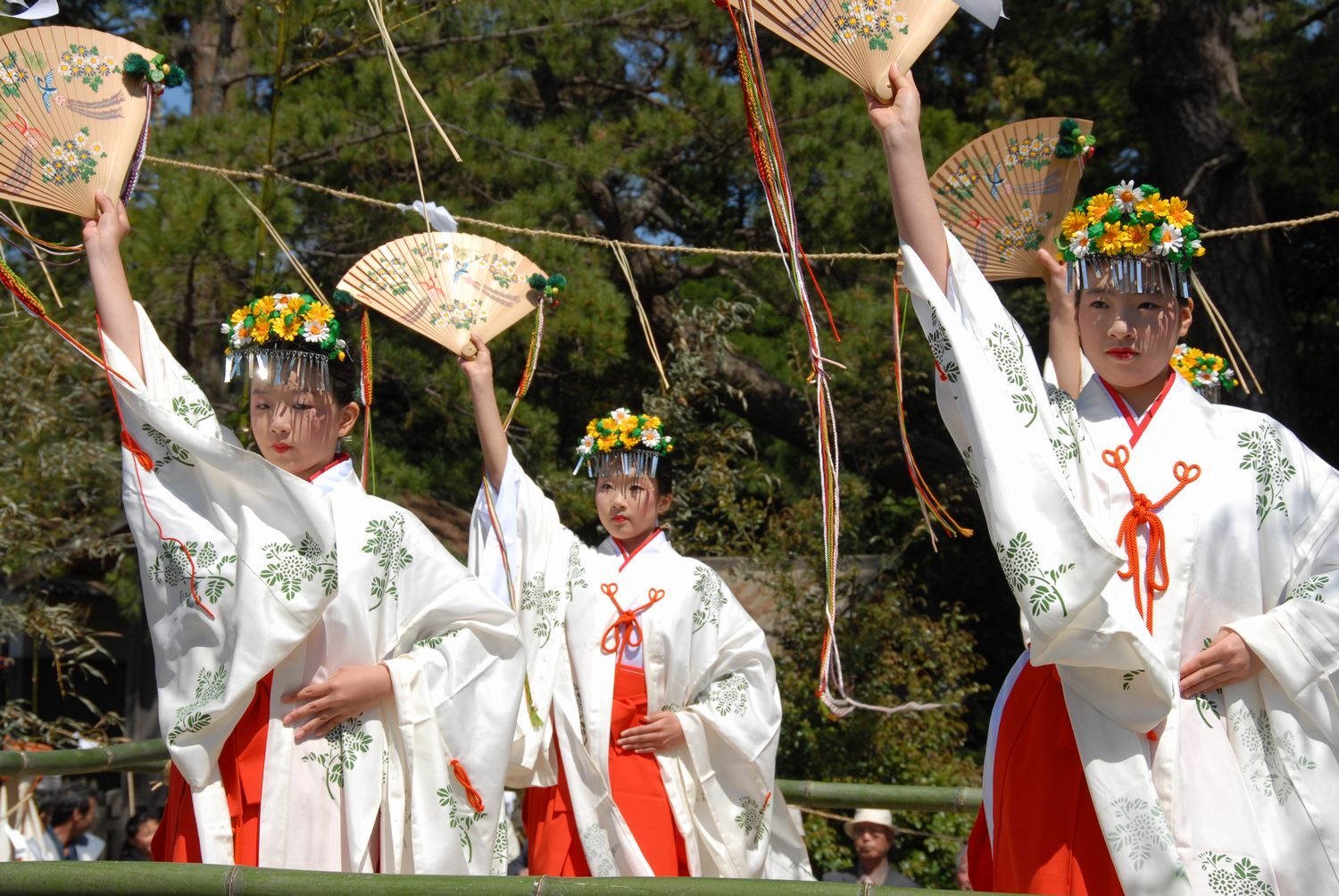
This is also one of the most popular and well-known festivals in Okinoshima Town, as the shrine grounds of Mizuwakasu Shrine are packed with spectators on that day. Yama-hiki-shinji, a ritual to pray for good health is carried out. A giant float decorated with symbols of longevity is pushed around the shrine grounds by local boys (up to the age of 7) from the area. Kagura Shinto dances, shishi-mai (Lion Dance) and yabusame (horse-back archery) also take place and the festival is designated as an Intangible Folk Cultural Property of Shimane Prefecture.
Shigesa-odori Parade, Okinoshima Town (second Saturday of May):
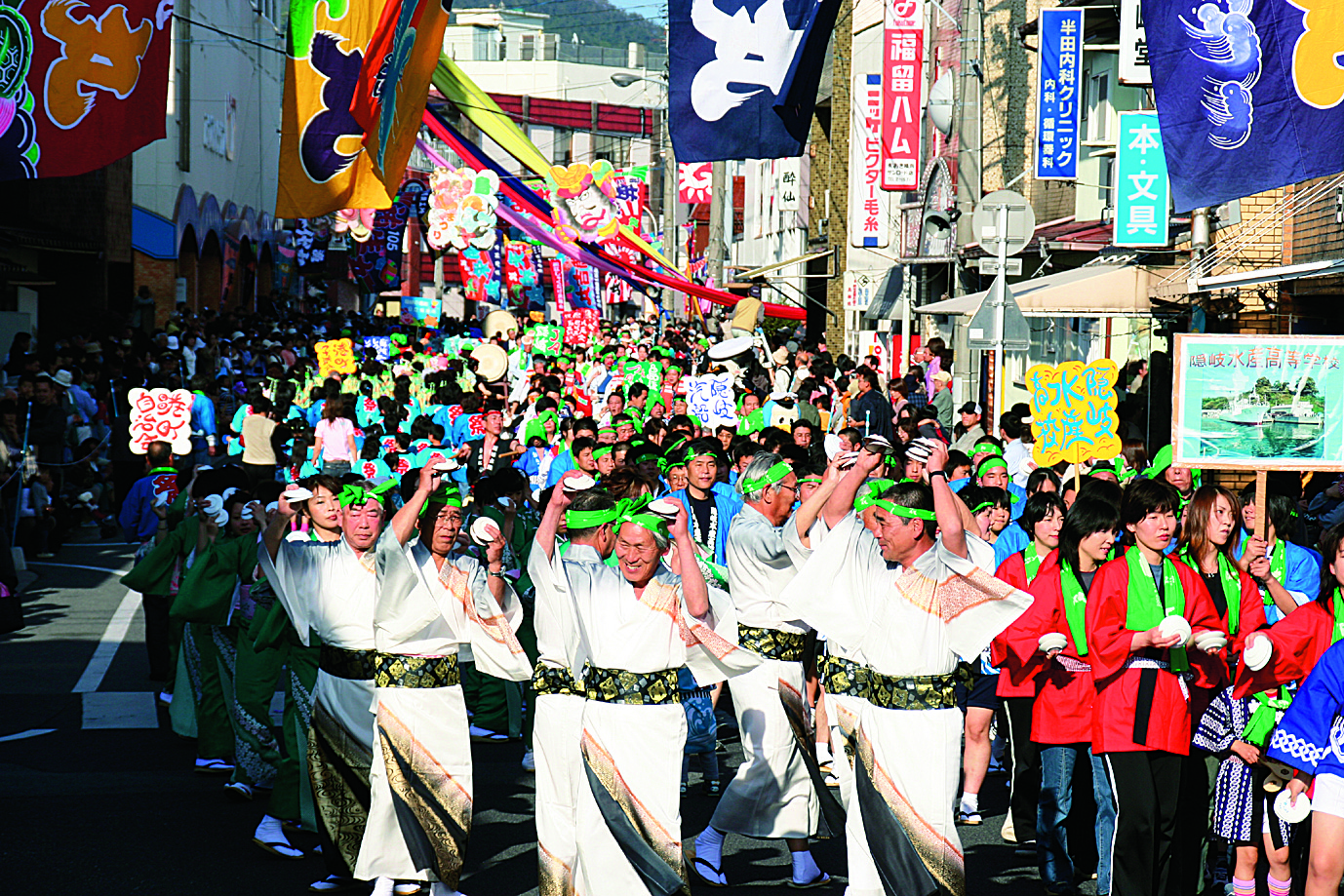
On the day of the event, the main street of Saigō Port area is packed with local and visiting dancers of the Shigesa-odori dance. Shigesa-odori dance comes from one of the most iconic folk songs, Shigesa-bushi, and has been handed down for generations. The dancers hold two small dishes between their fingers of both of their hands, and make a clapping sound to accompany the dance. Colourful dance costumes, unique dance moves, food stalls and appetising local food sure make this event enjoyable and unforgettable!
*The final decision on whether there will be food stalls or not will be taken in late March.
Activities and Tours
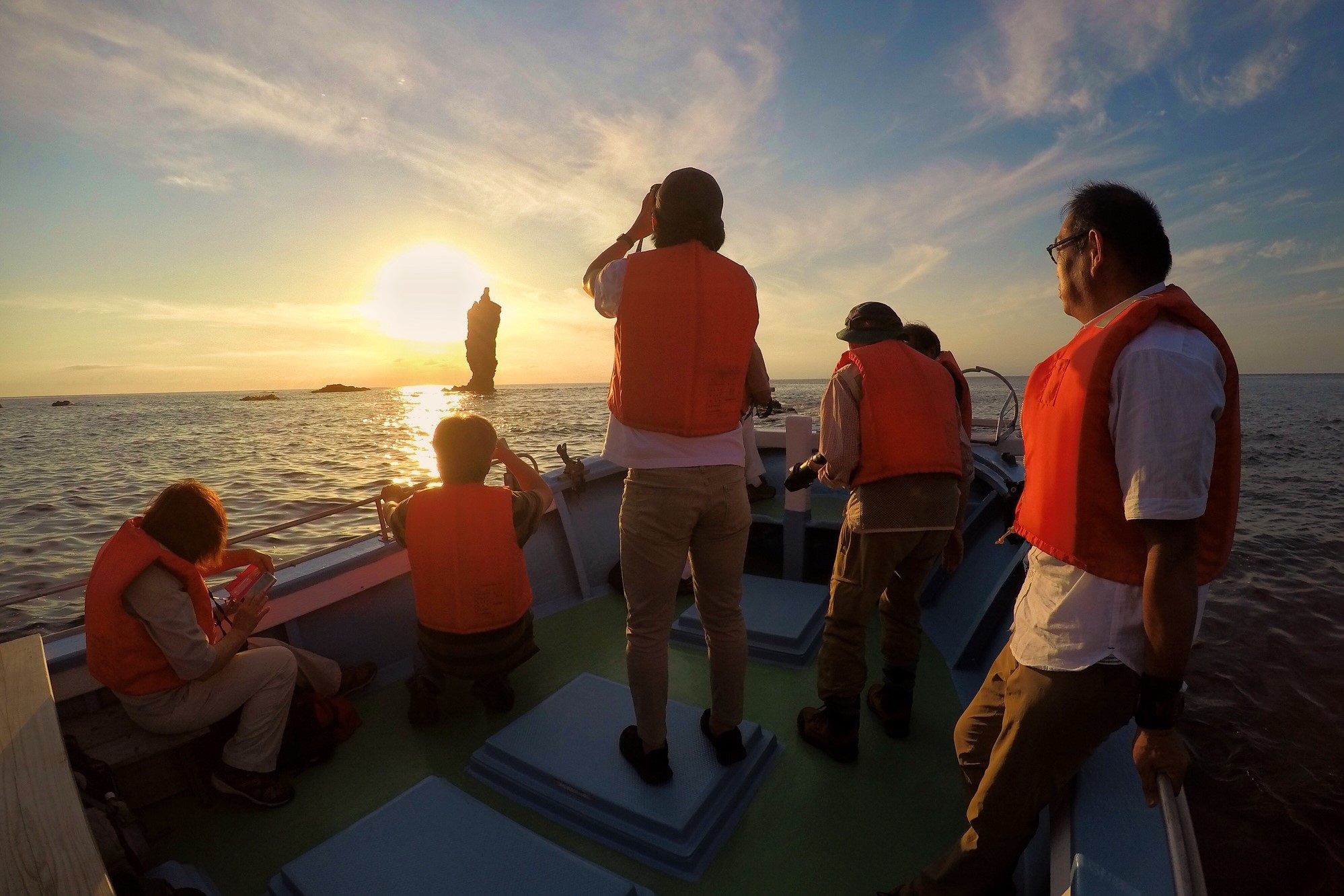
The sightseeing boats are back too as the sea gets calmer gradually when winter makes way for spring. Rōsoku-jima Sightseeing Boat (Okinoshima Town) is back from 1 April, and this sightseeing boat will bring you to the spot where you can see a giant candle set aflame by the setting sun. Kuniga Sightseeing Boat (Nishinoshima Town) starts its season in March, and if the weather allows, you might be able to go into a sea cave or two! Sekiheki (Red Cliff) Sightseeing Boat will take you to a prime observation spot where you can see the magnificent view of Sekiheki (Red Cliff). You can arrange the tour to coincide with sunset time, and see the cliffs be set aflame with the sunlight. And, if you are interested in seeing the underwater world up close, there is the Underwater Viewing Boat AMANBOW, from which you can peek into the sea through the glass windows in the bottom deck of the boat.
Check out this post for more info on sightseeing boats in Oki.
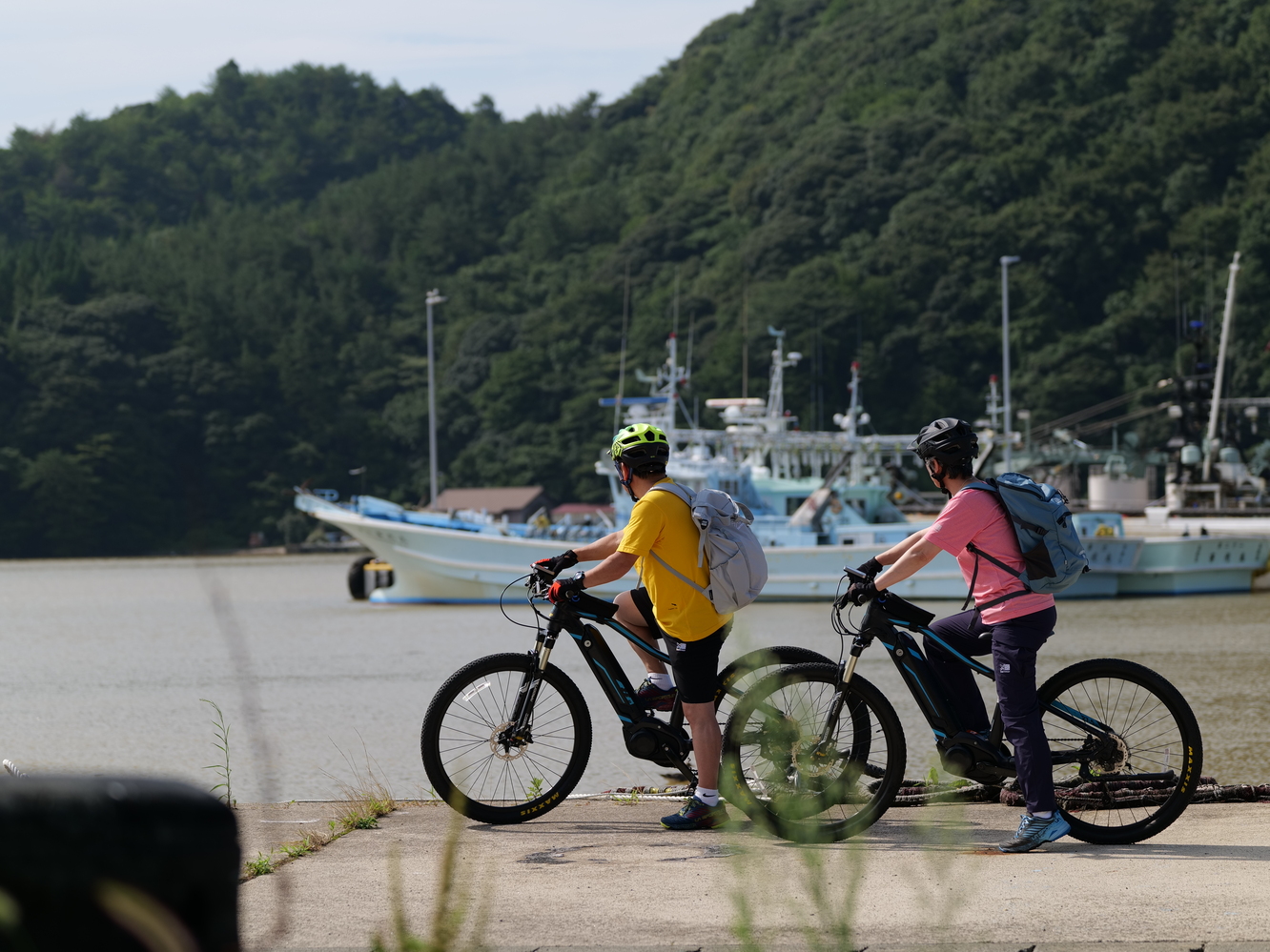
If you are a sporty person or looking into squeezing in a work-out or two during your holiday here, we have rental bicycles available on all four islands too! The weather is just perfect for you to make your way down the narrow roads or up the hills of the islands, and you will also have an opportunity to check out some cherry blossom-lined roads! There are also guided tours on e-bikes, operated in English, offered in Ama Town (NPO Oki Shizen Mura tour) and Chibu Village. The professional guides will show you the hidden gems on the islands, known only to the locals.
If you are more into self-guided cycling adventures, check out this article or sample itinerary on cycling in Ama Town, or this sample itinerary about cycling in Chibu Village.
Spring is also the perfect time to enjoy some walking and hiking before the summer scorching heat arrives. For a one-day hiking adventure in Nishinoshima Town see this tour by Oki Shizen Mura. The itinerary includes both Kuniga Coast and Takuhi Shrine, both places being the highlights of the Oki Islands.
The Weather and What to Wear
Although it can still be quite cold during the first half of the season, spring on the Oki Islands is very pleasant, with warm sunshine and soft, gentle breeze. The average temperature of March is 6.9℃, but it is still quite chilly late at night and early in the morning. In April, the average temperature can reach 11.9℃, and it gets much warmer during the day. In May, the average temperature increases up to 16.3℃, and occasionally you’d think summer is here already!
We suggest bringing a thin jacket or an all-round windbreaker to keep you warm when you are out exploring the shores or enjoying cherry blossom viewing at night. Hats, sunglasses and sunscreen lotions are also must-haves. We always recommend wearing long-sleeved shirts and long trousers to cover your skin to protect yourself from potential abrasions or dangerous plants and insects while you are out enjoying the nature of Oki.
Accommodation
Special Treat!
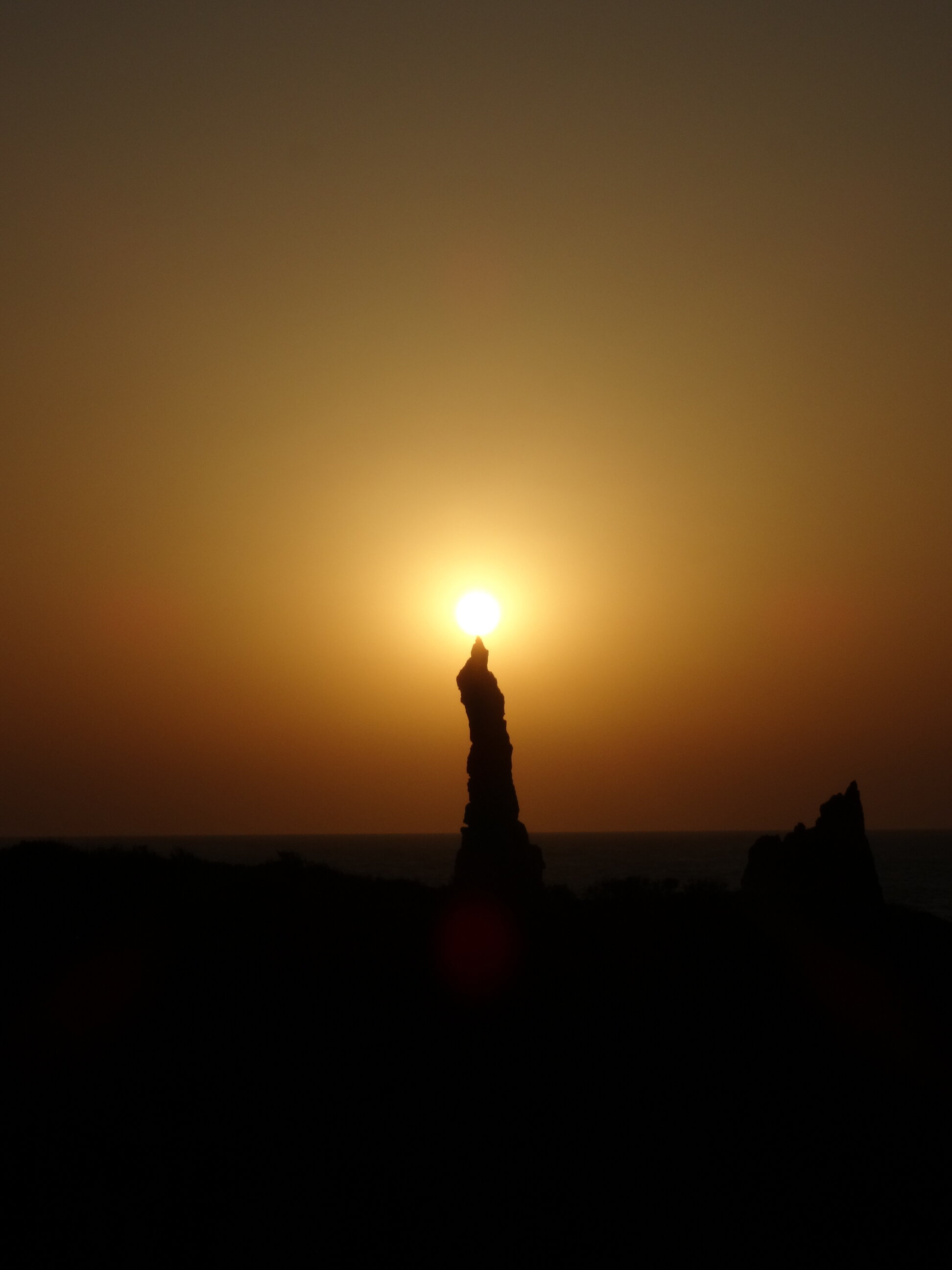
Standing just in front of Tsūtenkyō Arch in Nishinoshima Town, is a rock called Kannon-iwa Rock. Strong wind and waves have carved out this rock, and its shape reminds the locals of Kannon, the Buddhist deity. Between mid-April to early June and late August to mid-September, you can see the sun setting slowly on top of Kannon-iwa Rock, turning it into another “Candle Rock” on the islands.
We love seeing your photos of Oki!
Share your photos with us on Instagram by adding #visittheokiislands and tag us @visittheokiislands to share your images and give us permission to repost!
Author: Cleo Wong

